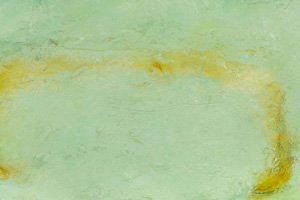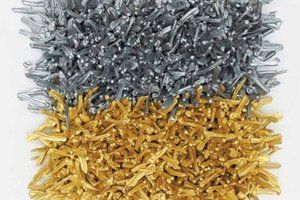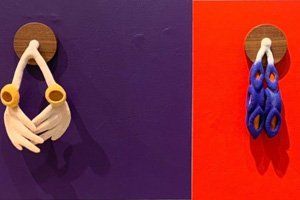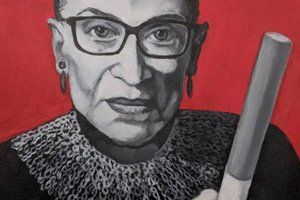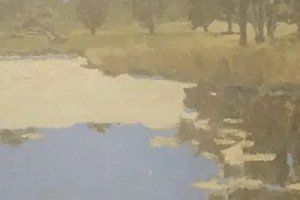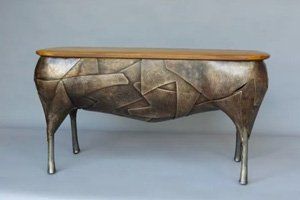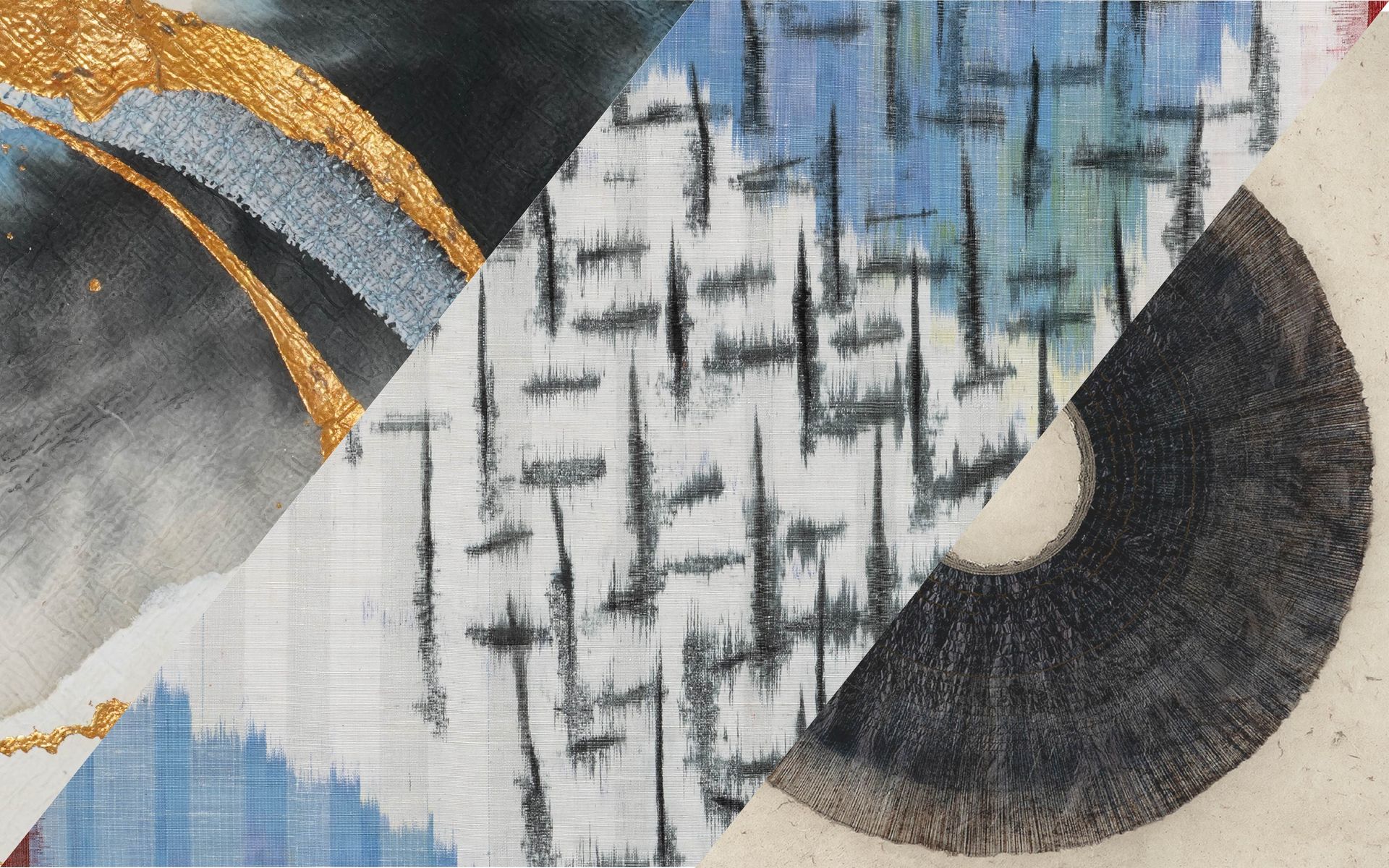
Echoes in Thread
Lucy Arai, Polly Barton, Agathe Bouton
May 22nd - July 10th, 2025
Receptions:
Opening reception: June 6 | 5-8pm
Artist Talk: June 6 | 6:30pm
Gravers Lane Gallery is pleased to present “Echoes in Thread: Woven, Printed and Stitched” an exhibition featuring the fiber-based works of Lucy Arai, Polly Barton and Agathe Bouton. A reception will be held on June 6th, 5:00-8:00pm, with artist conversation at 6:30pm.
While each artist brings a distinct approach and technique, their works are connected by shared themes of tradition, craftsmanship, and cultural resonance. Rooted in deep engagement with Asian aesthetics and philosophies, Echoes in Thread explores the interplay of heritage, materiality, and artistic interpretation. Arai and Barton draw inspiration from Japan where they studied and lived, incorporating elements of sashiko stitching and traditional weaving, while Bouton’s practice is informed by her experience living in Burma (Myanmar), where she was inspired by the local textiles and clothing and reinterpreted them into relief prints and monoprints.
The Thread serves as both a literal and metaphorical connector in this exhibition, weaving together artistic voices that emphasize contemplation, connection, and reflection. Each work—whether woven, printed, or stitched—carries a sense of quiet meditation and reverence for the history embedded in fiber traditions.
Arai presents works incorporating the Japanese sashiko running-stitch, ink, and handmade paper, blending precision with fluidity. Barton’s weavings, pastels on paper, and papyrus compositions employ Japanese metallic-coated monofilament to create a shimmering, continuous line of connection. Bouton’s “Burmese Days” series brings together monoprints and woodcuts, hand-stitched onto handmade Burmese and Japanese paper, evoking a tactile narrative of memory and place.
In its elegant simplicity, Echoes in Thread is a conversation in texture, material, and meaning—where the needle and thread become instruments of storytelling, and fiber traditions find new expressions in contemporary art.
Lucy Arai
About the Artist
Lucy Arai creates at the confluence of tradition and innovation. She uses temari (Japanese embroidered hand-balls) and sashiko (Japanese running-stitch tradition) to fabricate structures; to articulate details in forms; and to respond to fluid deposits of ink on handmade papers. Her playfulness with materials, acute attention to detail, and disciplined work ethic are apparent in the robust handling of sumi (ink) that is punctuated with responsive hand-sewing that accentuates, connects, and separates layers of compositional elements into cohesive relationships.
Arai earned a Master of Fine Arts degree (MFA, 1983) and Graduate Certificate of Museum Practices (1985) from the University of Michigan, and a Bachelor of Fine Arts cum laude degree (BFA, 1979), from the University of South Carolina. She was Assistant Curator of Cranbrook Academy of Art/Museum and worked on the restoration of Saarinen House (1985-86). George G. Booth founded Cranbrook Educational Community in 1927 and enlisted Finnish architect Eliel Saarinen to realize his vision for a place that educates and integrates daily life with design and production; it was this vision that inspired Arai to leave and establish her studio in 1987.
Arai is an active participant in the U.S. Department of State Arts in Embassies Program; her work is currently exhibited in the Ambassador’s residence in Tirana, Albania. She was also nominated for the 2005 Louis Comfort Tiffany Biennial Award, and is an AsiaAlive Artist at the Asian Art Museum of San Francisco. A short documentary about Arai was made by KQED 2007, the San Francisco PBS affiliate, for Spark!. In 2010 she exhibited at the Alhamra Art Gallery in Lahore, Pakistan and in 2011 at the National Museum of Pakistan in Islamabad.
In 2012, Arai collaborated with anthropologist Liza Dalby to explore the traditional art of mounting Japanese silk scrolls in non-traditional applications. After more than fifteen years of research by Mark D. Johnson, Arai’s work is among the first fifty artists identified as major contributors to the history of ink painting in America that culminated in 2013 with the exhibition and catalog, The Moment for Ink: documenting the history of ink painting in America. Arai works full-time in her studio and is a freelance Museum Education and Public Program Consultant for special exhibitions.
Arai has unquenchable curiosity and boundless enthusiasm. With her sensitive awareness of and respect for the importance of relationships, Arai facilitates humanity’s global quest for peaceful resolutions to conflicts by making works of art that transform traditional textile techniques and retain the integrity of traditions, structure and aesthetic. It is the white water of her life at the confluence of two cultures that Lucy Arai finds the stillness and inspiration to make her art.
Artist Statement
The interplay between the sumi ink, indigo pigment, and how I responded with sashiko stitching was the beginning of my awareness that I had effectively created a means of expression which came from a part of me that is beyond the reach of words. Since I was 3 or 4 years of age, I became aware that there was something inside that needed to come out. The wordless transmission of Japan’s sashiko stitching tradition from my Tokyo uncle to me at age 15 has become the literal, figurative, and visceral thread of my life’s journey that connects my Japanese half to my American half; my heart to my mind to my body to others to the diverse population of the world, to all animate and inanimate life as small as subatomic particles and as large as the cosmos.
Since 2007, my body gave me poorly timed and badly wrapped gifts that forced me out of the studio. I accepted that it was the opportunity I needed to process, learn, and heal in order to emerge with a clear and fluid conduit in place to work again. I am emerging now with the awareness that I stitch with a needle and thread in the same manner as human beings have sewn to meet the essential need to protect the body from the elements and labors of their lives throughout time and across all differences. This essential need dates back to 60,000 years ago as evidenced by a bone sewing needle in South Africa and 50,000 years ago in Siberia by Denisovans who predate Neanderthals. It is an exciting threshold to stand, because the humble needle and thread is now an eloquent and structural medium through which I create forms with tension; hold conversations with my illiterate handling of ink and brush, the medium of aristocrats and literati; and visualize how the essential needs of humanity can be the connective thread to piece, quilt, strengthen relationships for a world in crisis.
The echoes of my past resound with memories of feeling like two people in one body. Today I live a life fully aware that the struggles of navigating personal circumstances have the exact same dynamic forces that every person experiences to live life with stability, balance, and the sense of belonging. What I have learned is that balance is an organic and perpetual process of adjusting and connecting to everything outside of ourselves and within; just like the characteristics of the circle. Like our essential needs for survival, all human beings all share this intrinsic characteristic.
When I examine the most fundamental and essential needs and characteristics of humanity, we are the same. The differences that separate, divide, and distinguish humanity are the ways the needs are met through the entirety of human history.
Polly Barton
About the Artist
Polly Barton is a nationally recognized artist who has been working in fiber for forty years. Trained in Japan, she is known for working with traditional methods of binding and dyeing bundles of fiber to weave contemporary ikat imagery. Her studio practice has shifted over the last fifteen years to incorporating a wide range of materials including pigment, soy milk, pastel, metallic threads, stitching, papyrus, and metal leaf.
“Fingering the thread whether in winding, weaving, tying, dyeing, or stitching, always leads to the next idea.” Her recent work has been weaving spun linen paper (shifu in Japanese) to create her own canvas.
As a young artist, Polly Barton points to her formative job as the personal assistant to Helen Frankenthaler, from whom she observed the inner drive and resilience necessary for an artist. Working with Helen was an introduction to the challenges and rewards of the New York art world.
In 1981, she moved to Kameoka, Japan and lived in the religious heart of the Oomoto Foundation to study with master weaver, Tomohiko Inoue. She practiced tea ceremony, calligraphy and Noh Drama with Oomoto’s master teachers. Barton continues to weave and shows her work on both coasts.
Her work is in many collections including the Art Institute of Chicago, the Boston Museum of Fine Arts, The Seattle Art Museum, the David Paly Ikat Collection, the Community Hospital Foundation of Monte Rey, the George Washington University Museum and the Textile Museum, and the Longhouse Reserve in New York. Hali Magazine, FiberArts, Surface Design Journal and American Craft, among others, have published her work. She is a member of the Textile Society of America, the Surface Design Association, the Handweavers Guild of America, the Textile Study Group of New York, and the Espanola Valley Fiber Arts Association.
Artist Statement
It is the still small voice, the thread which beckons. The Japanese metallic coated monofilament echoes throughout my recent work, every thread precious. I spied the shimmering warp in a treasure box, chained into small loops, reminding me of minnows swimming close to shore. I first used this metallic monofilament as a warp and wove Burnished Countenance. Then I used single threads to stitch patterns into my rubbed pastels, the Pollen Velvets and into papyrus, Telios. The metallic thread has deepened my sense of play with silver leaf in Surfacing and Fierce Solace. With pigment, pastel, ink, dye, and metal, I rub color and work the liminal space between a painted surface and the woven structure.
Agathe Bouton
About the Artist
Agathe Bouton, (b.Paris, France; lives Wynnewood, PA, USA) is a French printmaker and multimedia artist known for her contemporary approach to printmaking. She earned her BFA and MFA from ESSAA Duperré in Paris. Over the past 20 years, Bouton has lived and exhibited in cities like Paris, London, Philadelphia, New York, Rangoon, Dakar, and Istanbul. Her solo exhibitions include venues such as the Biennale de l’Art Africain Contemporain in Dakar, Galerie Martine Namy-Caulier in Paris, Stanek Gallery in Philadelphia and Zürcher Gallery in New York.
Bouton has received numerous awards, in 2022 she received the Meyer Family Award for Contemporary Art and being a finalist in the 98th Annual International Competitions of The Print Center in Philadelphia in 2023. Recently she won the Louise K. Binswanger Prize for Best Artist. Her work is part of collections in prestigious French institutions like the Bibliothèque Nationale and American collections such as the Free Library of Philadelphia and Swarthmore College Library.
Artist Statement
Burmese Days” series is inspired by the rich textiles of Burma (Myanmar), where I lived from 2006 to 2010. For these pieces my inspiration came from the shape of a pleated skirt, common in eastern Shan State, when it is laid flat or flared out in a full spin. I explore the beauty and meaning of these fabrics through some exquisite relief prints and monoprints onto local Burmese handmade mulberry paper.
My pieces hint at women’s lives lived within these precious textiles as they are worn, washed, faded by the sun, lashed by the rain, torn, repaired and worn again. My aim is never to mimic the fabric exactly, but to reflect the lifespan of a skirt - from the intricacies of the original sewing to the repairs, often crude, that add layers of colour and interest.
I want to show that these deeply valued textiles bear witness to the lives of the women who grow, play, work, celebrate and die within them. We are challenged to imagine moments of these lives –the special and the mundane. Combining monoprint and woodcut I print by hand onto handmade Burmese and Japanese paper, and add stitching by hand.































